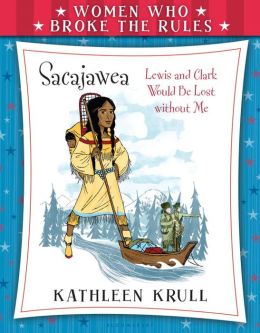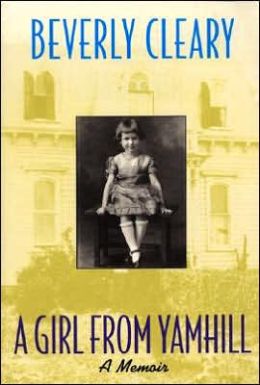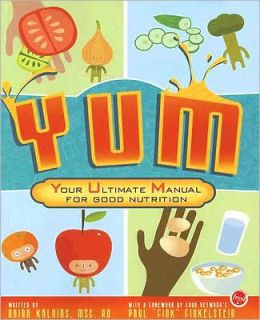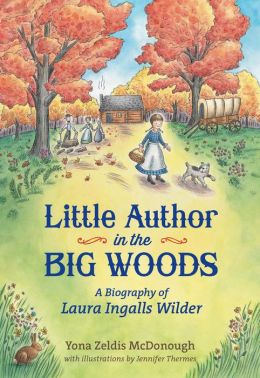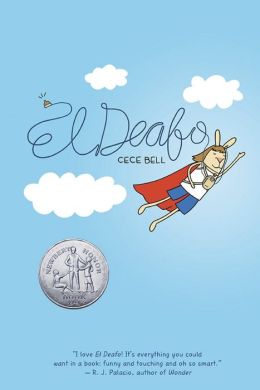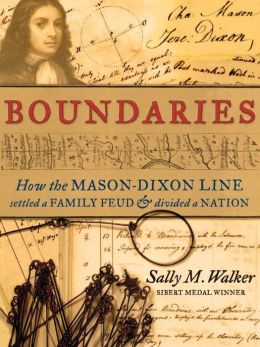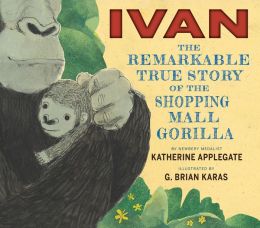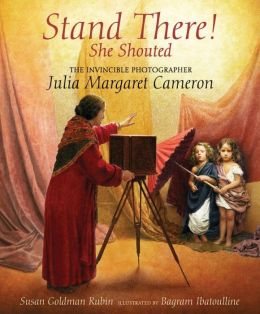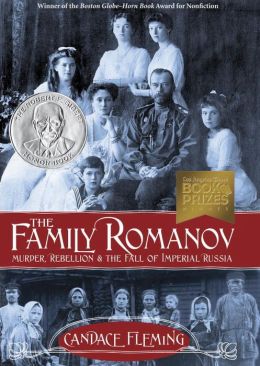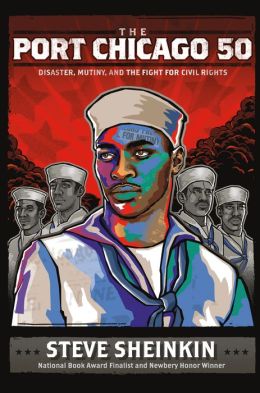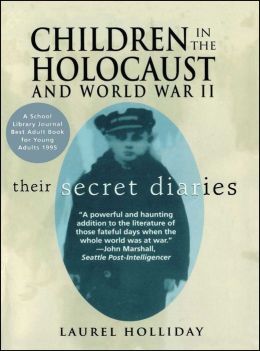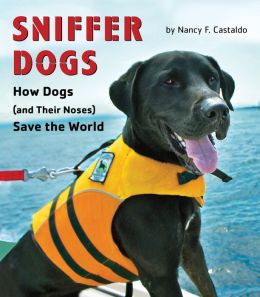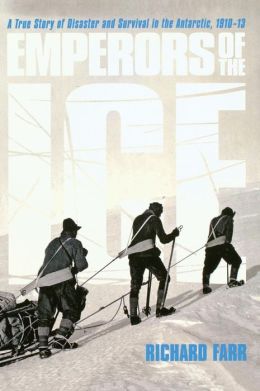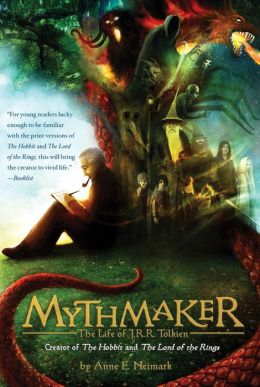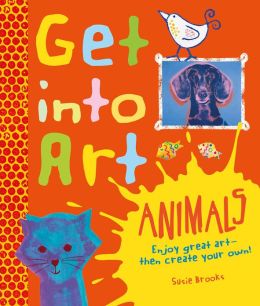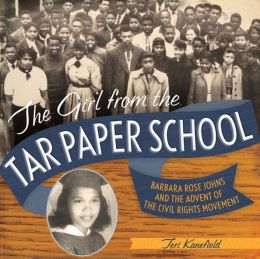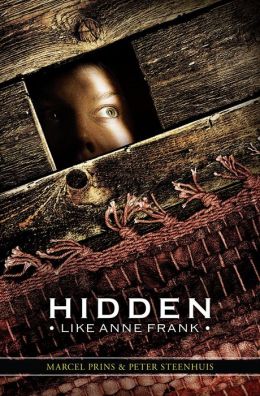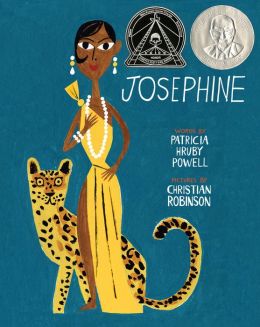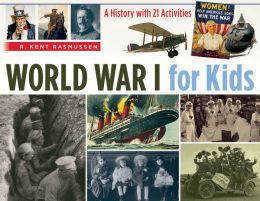new posts in all blogs
Viewing: Blog Posts Tagged with: mg nonfiction, Most Recent at Top [Help]
Results 26 - 48 of 48
How to use this Page
You are viewing the most recent posts tagged with the words: mg nonfiction in the JacketFlap blog reader. What is a tag? Think of a tag as a keyword or category label. Tags can both help you find posts on JacketFlap.com as well as provide an easy way for you to "remember" and classify posts for later recall. Try adding a tag yourself by clicking "Add a tag" below a post's header. Scroll down through the list of Recent Posts in the left column and click on a post title that sounds interesting. You can view all posts from a specific blog by clicking the Blog name in the right column, or you can click a 'More Posts from this Blog' link in any individual post.
The Polar Bear Scientists. Peter Lourie. 2012/2015. Houghton Mifflin Harcourt. 80 pages. [Source: Review copy]
Curious about polar bears? Especially polar bears in the wild? Have an interest in science? Curious about what it is a scientist actually does day to day? Peter Lourie's The Polar Bear Scientist is a reader-friendly book giving readers a behind-the-scene look at several scientists who study polar bears--who have spent most of their lives studying polar bears.
I loved the photographs I did. Yes, the book is packed with information, but, it was the photographs themselves that held my interest. Personally, I found the layout to be a bit difficult on the eyes. Some pages were black text on top of light photographs--snow mainly--but, plenty were white text on a black background. Not every reader will mind this, but, it was hard on my eyes and probably kept me from fully engaging with this one.
Polar Bear Scientists is one of the books in the Scientists in the Fields series published by Houghton Mifflin Harcourt.
© 2015 Becky Laney of
Becky's Book Reviews

By:
Becky Laney,
on 6/10/2015
Blog:
Becky's Book Reviews
(
Login to Add to MyJacketFlap)
JacketFlap tags:
Nonfiction,
Holocaust,
autobiography,
World War II,
Newbery Honor,
YA nonfiction,
children's classic,
mg nonfiction,
library book,
1972,
Add a tag
The Upstairs Room. Johanna Reiss. 1972. HarperCollins. 208 pages. [Source: Library]
I am so glad I decided to read Johanna Reiss' The Upstairs Room. This one has been on my list of books I needed to read for quite a while--over a decade at least. It is nonfiction--a biography--set during World War II. The author and her sister were Jews that hid for several years from the Nazis.
Readers meet Annie, the young heroine, and her family. She has several older sisters, a mother and father. The war changes everything for the family. The mother, who was close to death anyway--the Nazis invasion of Holland didn't really change the outcome. The family found hiding places, but, separate hiding places. Annie was placed in a hiding place with one of her sisters. Readers meet the two families that hid the two girls. One family became like a second family to her. I found the book to be a quick read, and quite intense.
The book itself was well-written: both compelling and well-paced. What surprised me a little bit, and what might surprise others as well, is the language. I wasn't expecting (strong) profanity in a Newbery Honor book! I really wasn't. That being said, it wasn't a huge issue for me--as an adult reader. But I could see how it might not work for certain families as a read-aloud choice.
© 2015 Becky Laney of
Becky's Book Reviews
Sacajawea (Women Who Broke the Rules) Kathleen Krull. 2015. Bloomsbury. 48 pages. [Source: Review copy]
Kathleen Krull has a new nonfiction book series: Women Who Broke The Rules. So far the series features biographies of Sacajawea, Judy Blume, Dolley Madison, and Sonia Sotomayor. Biographies of Coretta Scott King and Mary Todd Lincoln are listed as 'coming soon.' I think the series has some potential for its intended age group. Especially when I think about the oh-so-limited options I had as a child.
Krull has written plenty of picture book biographies, but these new books are chapter books. (They do feature illustrations. One of the most important things to me as a kid when it came to picking a nonfiction book for a book review.)
What did I think of Sacajawea? I liked the introduction to this new series. I thought it was a quick, informative read. As an adult, I have read a few books on the Lewis and Clark expedition, and so I knew a little about it. But I hadn't read a book specifically focused on Sacajawea. It was a nice introduction, I believe.
Overall, I'm happy to recommend the series. I think it would be a good choice for elementary students.
© 2015 Becky Laney of
Becky's Book Reviews

By:
Becky Laney,
on 4/6/2015
Blog:
Becky's Book Reviews
(
Login to Add to MyJacketFlap)
JacketFlap tags:
HarperCollins,
biography,
Nonfiction,
autobiography,
YA nonfiction,
adult nonfiction,
mg nonfiction,
library book,
books reviewed in 2015,
Add a tag
A Girl from Yamhill. Beverly Cleary. 1988/1996. HarperCollins. 352 pages. [Source: Library]
If you grew up reading Beverly Cleary, you should make time to read her autobiography, A Girl From Yamhill. This first autobiography covers her life from her earliest toddler memories through high school.
In Cleary's books for children, she often focuses on what it's like to BE a kid: to go to school, to spend time with friends, to encounter not-so-friendly kids, to play, to 'get along' or not with your family. But also to THINK like a kid. I thought she was always really good at capturing childhood anxieties and worries. So in A Girl from Yamhill, readers get a chance to find out what Cleary's own childhood was like, what her home life was like, what her school experiences were. Reading A Girl From Yamhill gave me a greater appreciation for the Ramona books. It's not as if you could say that Beverly was Ramona. She wasn't. Though she did play BRICK FACTORY. (Also Beverly had a doll named after a car.) But I could see some correlation between the two certainly. For example, she writes of the financial difficulties, and of the stress her father was under when he was in-between work or out or stuck in a miserable job. So there were certain things that reminded me of the Ramona books. I do feel the Ramona books are timeless.
This one covers so many years. I'm not what the 'perfect' audience age would be. It isn't a light read or a funny one.
So I really enjoyed reading this one. Perhaps I enjoyed it so much because I read and reread Cleary's books so often.
© 2015 Becky Laney of
Becky's Book Reviews
YUM: Your Ultimate Manual for Good Nutrition. Daina Kalnins. 2008. Lobster Press. 192 pages. [Source: Review copy]
YUM is an informative nonfiction read for upper elementary and middle grade students. Its focus is on teaching young people the basics of nutrition, on how to be more aware of what they're putting in their bodies. It is not a diet book, a
how to lose weight book. If nothing else, the book will teach readers HOW to read food labels and basic definitions of key terms.
In the first chapter, the focus is on macronutrients: carbohydrates, fats, and protein. In the second chapter, the focus is on micronutrients: Vitamin A, Vitamin B, Vitamin C, Vitamin D, Vitamin E, Vitamin K, Calcium, Iron, Zinc, Potassium, and Sodium. In the third chapter, the focus is on how the body digests food. In the fourth chapter, the author provides sample menus and recipes for breakfast, lunch, supper, and morning and afternoon snacks. In the fifth chapter, the practical advice continues on how to make changes and establish good habits. This last chapter covers a little bit of everything: food safety (how long to keep food, how to tell if food has gone bad, etc), grocery shopping, eating out, etc.
The book is written for kids and with kids in mind. The advice is specifically for what growing, active children need to be eating to be healthy.
Nutrition books can become dated quickly, this one isn't as up-to-date as I'd like. But it still has some good, basic information. One thing that makes it continue to be relevant is how reader-friendly it is.
My favorite chapter is probably the one on micronutrients. I loved learning what each nutrient does in the body, and which foods you should eat to get that nutrient.
© 2015 Becky Laney of
Becky's Book Reviews
Invincible Louisa: The Story of the Author of Little Women. Cornelia Meigs. 1933/1995. Little, Brown. 256 pages. [Source: Library]
My mom has wanted me to read Invincible Louisa for years. I finally did, and I enjoyed it. Did I love it? Probably not LOVE. But I certainly appreciated it and found it pleasant enough.
Invincible Louisa is a biography of Louisa May Alcott written for children. It reads much like a novel. There is plenty of dialogue; there is plenty of emotion and description. It covers her whole life--from birth to death. Though not equal attention is given to every year, of course!!! Much of the focus is on the whole Alcott family.
Probably half the book focuses on Louisa Alcott "becoming" a writer: how she came to write stories, sketches, poems, novels, etc., how she came to be published, how her works were received by critics and the public. But the book focuses much on her character. (It's not a word you hear a lot about now perhaps. But her values, beliefs, and principles.) So, yes, the book is about her being a writer, but, it is just as much about her being a daughter and sister.
Would I have appreciated Little Women more if I'd read Invincible Louisa as a child? Perhaps. The two books would definitely complement one another.
© 2015 Becky Laney of
Becky's Book Reviews
Little Author in the Big Woods. Yona Zeldis McDonough. 2014. Henry Holt. 176 pages. [Source: Library]
I expected to love this biography of Laura Ingalls Wilder. It did not disappoint even slightly. It is written for an audience ready to appreciate the Little House novels. That was a nice touch, I thought. For children who already love the original Little House books, this book is great for telling more of the whole story. Readers can see for themselves the similarities and differences between the books and her real life. There were details she left out or changed. There were periods of her life she didn't write about. Readers also get a fuller story for her whole life birth through death. Some details, of course, I'd read before, but, there were a handful of things that I'd not read before, or, that I don't remember reading before!
It is a quick read. It is an interesting read too! I love the subject, of course, I must have read the books dozens of times growing up. (Long Winter and These Happy Golden Years are my favorites in the series.) I also love the cute title of this one!!!
It is easy to recommend this one! It just says,
read me! read me!© 2015 Becky Laney of
Becky's Book Reviews
El Deafo. Cece Bell. 2014. Harry N. Abrams. 233 pages. [Source: Library]
I put El Deafo on hold at the library not knowing it was a graphic novel. In a way, I'm glad I didn't know. I don' t read many graphic novels, there are, of course, exceptions to every rule. El Deafo is a coming-of-age memoir in graphic novel format. I loved it. I really loved it. It surprised me in all the right ways.
It begins simply, "I was a regular little kid. I played with my mom's stuff. I watched TV with my big brother, Ashley, and my big sister, Sarah. I rode on the back of my father's bicycle. I found caterpillars with my friend Emma. And I sang. 'We all live in a yellow submarine, a yellow submarine--' But then everything changed." A childhood illness at the age of 4--meningitis--leaves her deaf.
The memoir covers many years of her childhood, from the age of four through her sixth grade year in school. In a way it is about her growing up deaf, growing up different. But in many ways, it is about so much more than that: it's about family and friendship and belonging and struggling to belong. It is about her wanting and needing a 'true' friend. It is about her mishaps in friendships. There are a few untrue friends before there is the one that is true. It is very much about identity: how she sees herself, her struggle to be comfortable with herself, to accept and love herself. Another aspect of El Deafo which I very much enjoyed is Cece's first crush.
In her imagination, she's closer to being there, in that place. She imagines that she is a superhero, El Deafo, the super-hero self stands up for herself to her friends AND her family. Her super-hero self lets others know what she's feeling, when she's mad, when her feelings are hurt, etc. Her superhero self is brave and courageous letting others know that she doesn't need people to talk really loudly or really slowly. Her superhero self lets people know that she hates it when they call her "my deaf friend" or "that deaf kid."
El Deafo is set in the 1970s, I believe. There are plenty of cultural references to place it in that decade. I really enjoyed the scenes where she was watching TV.
So, yes, El Deafo is in my opinion about so much more than growing up deaf. This book is easy to love and oh-so-easy to recommend.
© 2015 Becky Laney of
Becky's Book Reviews
Boundaries. Sally M. Walker. 2014. Candlewick. 208 pages. [Source: Review copy]
While American history is not my favorite subject, I did enjoy various aspects of Boundaries: How The Mason-Dixon Line Settled A Family Feud and Divided a Nation. I can appreciate the thoroughness of the research and the organization of the narrative.
It's a broad subject. The book begins in England and follows two men who established colonies in the New World. One man, a Catholic, the second man, a Quaker. One would establish Maryland, the other would establish Pennsylvania. It follows those two families for a chapter or two pointing out the disputes and troubles regarding the border or boundary between the two colonies. It points out that there were regions that BOTH claimed and that BOTH tried to tax settlers. So one governing body could say pay taxes to me, not them. Readers could see how residents could find it frustrating and confusing. Most of the book, however, is about two men, two scientists: Charles Mason and Jeremiah Dixon. It goes into great detail about HOW the two men surveyed the land, walked the three lines to establish boundaries. It is very science-y, very technical. It shares details about their work, their crews, their journeys, their guides, etc. This project lasted several years. One chapter focuses on the Mason-Dixon line as symbol of free states and slave states, a division of North and South. That chapter discusses about two hundred years worth of history. The last chapter is an odd one. It brings the Mason-Dixon line into contemporary times; it speaks of the men and women who have taken an interest in it, have taken an interest in the boundary stones, who have set off on a quest to find the original markers, or, who have worked to get historical markers for the region in various locations.
I found this one to be a bit dry in places.
© 2014 Becky Laney of
Becky's Book Reviews
Brown Girl Dreaming. Jacqueline Woodson. 2014. Nancy Paulsen Books. 336 pages. [Source: Library]
Brown Girl Dreaming is a lovely, often fascinating, memoir written in verse. "Verse novels" can be tricky for me. Sometimes I love them, sometimes I really don't. But in this case, it works well. The writing is just lovely, for the most part. The book is rich in detail capturing what it was like to grow up in Ohio, South Carolina, and New York in the 1960s and 1970s. The people. The places. The sights, sounds, and tastes. The feelings. It's a book that feels personal: an intimate look at family and friends. I very much enjoyed reading it.
Brown Girl Dreaming is a memoir of an author. So it's no big surprise that the focus of this one is on words and stories and reading and writing, of using words and stories to make sense of the world, or, to make a whole new world. But in addition to being about an author's journey, it is a novel about identity as well: who am I, why am I here, what am I supposed to do, etc.
How can I explain to anyone that stories
are like air to me,
I breathe them in and let them out
over and over again. (247)
© 2014 Becky Laney of
Becky's Book Reviews
Ivan: The Remarkable True Story of the Shopping Mall Gorilla. Katherine Applegate. 2014. Houghton Mifflin Harcourt. 40 pages. [Source: Library]
Ivan's story is told through verse in Katherine Applegate's latest book. Ivan, of course, was the inspiration for her award-winning The One and Only Ivan. It opens beautifully: "In leafy calm, in gentle arms, a gorilla's life began." It closes beautifully: "In leafy calm, in gentle arms, a gorilla's life began again." For most of his life, Ivan was a shopping mall gorilla. His early years of captivity, he spent at the shopping mall and at the home of one of the employees, I believe. He was treated very much as a pet/child. But once he began growing and developing, he lived caged-up at a mall. The book is about his life at the mall, and, how people helped him gain his freedom by writing letters, signing petitions, and holding protests. Eventually, he was moved to a zoo exhibit with other gorillas. He spent the remaining years of his life there, lonely no longer.
I enjoyed this one. I enjoyed the novel too. I think the illustrations by G. Brian Karas were great. I would have loved a few more pictures of the real Ivan, however. But still, the illustrations were well done.
© 2014 Becky Laney of
Becky's Book Reviews
Stand There! She Shouted: The Invincible Photographer Julia Margaret Cameron. 2014. Candlewick. 80 pages. [Source: Review copy]
Stand There! She Shouted is a biography of Julia Margaret Cameron, a noted photographer of the nineteenth century. From birth to death, details of her life are highlighted for young readers. She was born in India, raised in France, recuperated from an illness in Cape Town, South Africa, where she met her future husband, Charles Hay Cameron. The book does spend some time on her personal life: daughter, sister, wife, mother, grandmother. But it also spends plenty of time on her hobby/career as a photographer. How she learned about photography. Her first camera. Her first photographs. Her first failures. Her first successes. Who she photographed and why. Her favorite techniques and unique style. (She liked the subject to be slightly out of focus. She liked the softness.) How many photographs she took--3,000. One thing the book did really well was focus on how her sitters or posers felt. Did they like posing for her? How did they describe the experience? I liked these accounts of her work.
The book is illustrated by Bagram Ibatoulline. I love his work. I do. But. I wish there had been more photographs by Julia Margaret Cameron.
Favorite quotes:
She selected her sitters carefully. In a letter to a friend, she said that there were three reasons she photographed: "great beauty--great celebrity--and great friendship." (58)
As a photographer, she was ruthless. Children, her favorite subject, feared her. Julia Margaret lurked by the door, ready to stop a passing child for hours of posing. Edith Bradley Ellison recalled that the children of Freshwater "loved" her but "fled from her." When they saw her, they'd call out, "She's coming! She'll catch one of us!" And when Julia Margaret caught them, she bribed them with candy to pose. (46)
© 2014 Becky Laney of
Becky's Book Reviews
The Family Romanov: Murder, Rebellion, and the Fall of Imperial Russia. Candace Fleming. 2014. Random House. 304 pages. [Source: Library]
I've had this one checked out from the library for months, it seems. But once I actually started reading it, it moved quite quickly. That doesn't mean it was an "easy" read, however. It was just as dark and depressing as you might expect. It isn't always easy to read a book when you know the ending.
This one is rich in details, I thought. And it did a great job of putting everything into context, especially in terms of social classes. One got a feel for what life was like for the rich and the poor. It was easy to understand WHY the masses were ready for change, ready to rebel, ready to have a voice, ready to be taken seriously. Desperation. The book dwells on the desperation felt during these decades. That and despair. It's not an uplifting book. It's not a book with a lot of hope to it.
I think it authentically captures the times, the injustice of the times. And in a way, it is fascinating enough. But it's also heartbreaking. Because it doesn't matter if you're looking at the before or after picture, life was HORRIBLE, living conditions were awful.
© 2014 Becky Laney of
Becky's Book Reviews
The Port Chicago 50: Disaster, Mutiny, and the Fight for Civil Rights. Steve Sheinkin. 2014. Roaring Brook. 208 pages. [Source: Library]
Wow! What a book! Port Chicago 50 is a compelling nonfiction read. It is informative and detailed, but, it never felt like it was too much, like it was too-information-heavy. It was fascinating and at times shocking. It examines HOW African-Americans were treated in the navy during the second world war. It deals with prejudice and discrimination and injustice. Specifically it focuses on a select group of soldiers stationed at Port Chicago. The soldiers moving explosives from docks to ships were all African-Americans. These soldiers received no special training or instructions. It didn't take them long to figure out that disaster could come at any time, that every day came with big, big risks. Disaster did come. It was awful. It changed the survivors--haunted the survivors. So when these men are asked weeks later to go back to work with explosives, well, some decide to say no. The book is ultimately about 50 men who decided that they did not want to obey orders to load explosives. About the consequences of their actions--or inaction as the case may be. The men were charged with mutiny and put on trial. Would justice be served? Would they have a fair hearing?
The Port Chicago 50 is emotional and fascinating. It was a beautifully written story about the fight for justice and equality. It was everything a nonfiction book should be.
Definitely recommended.
© 2014 Becky Laney of
Becky's Book Reviews
Children in the Holocaust: Their Secret Diaries. Laurel Holliday, ed. 1996. 432 pages. [Source: Library]
Children in the Holocaust and World War II: Their Secret Diaries is an almost must-read in my opinion. It is incredibly compelling and emotional. Memoirs are great. They are. I have loved many autobiographies and biographies. But diaries are a bit unique. They tend to stay in the moment; there is a rawness perhaps in the emotions. They capture specific moments in time. They record the best and worst and everything in between. These diary entries are well worth reading.
These children's diaries are testimonies to the fact that telling the truth about violence is not harmful. In fact, one wonders how much greater harm these boys and girls would have suffered had they not written about the horrific events they were experiencing. Far more dangerous than reading about atrocities, I believe, is the pretense that atrocities do not occur. To turn our eyes away and refuse to see, or to let children see, what prejudice and hatred lead to is truly to warp our collective psyche. It is important for all of us--adults and children alike--to acknowledge the depths to which humankind can sink. The children teach us, by sharing their own direct experience of oppression, that nothing is more valuable than human freedom. This lesson alone is reason enough to read and to encourage children to read, these diaries.
This book gathers together diary entries from twenty-two writers. The countries represented include: Poland, Holland, Germany, Czechoslovakia, Austria, Hungary, Lithuania, Russia, Belgium, England, Israel, and Denmark. Seven of the twenty-two writers are from Poland. Some writers survived the war. Others did not. I believe that all of these entries have been previously published in some format, in at least one language. The listed age refers to the writer's age for the first diary entry printed in the book. This book provides excerpts from diaries. None of the diaries, I believe, are reprinted in full. These excerpts represent the diaries as a whole, and provide a bigger picture for understanding the war.
- Janine Phillips, Poland, 10 years old
- Ephraim Shtenkler, Poland, 11 years old
- Dirk Van der Heide, Holland, 12 years old
- Werner Galnick, Germany, 12 years old
- Janina Heshele, Poland, 12 years old
- Helga Weissova-Hoskova, Czechoslovakia, 12 years old
- Dawid Rubinowicz, Poland, 12 years old
- Helga Kinsky-Pollack, Austria, 13 years old
- Eva Heyman, Hungary, 13 years old
- Tamarah Lazerson, Lithuania, 13 years old
- Yitskhok Rudashevski, Lithuania, 14 years old
- Macha Rolnikas, Lithuania, 14 years old
- Charlotte Veresova, Czechoslovakia, 14 years old
- Mary Berg (pseudonym), Poland, 15 years old
- Ina Konstantinova, Russia, 16 years old
- Moshe Flinker, Belgium, 16 years old
- Joan Wyndham, England, 16 years old
- Hannah Senesh, Hungary and Israel, 17 years old
- Sarah Fishkin, Poland, 17 years old
- Kim Malthe-Bruun, Denmark, 18 years old
- Colin Perry, England, 18 years old
- The Unknown Brother and Sister of Lodz Ghetto, Poland, Unknown Age and 12 years old
I won't lie. This book is difficult to read. Difficult in terms of subject matter. It is an emotional experience. Readers are reading private diary entries. The entries capture the terror and horror of the times. They capture the uncertainty that almost all felt: will I survive? will I survive the day? will I survive the war? will my family? will my friends? will I witness their deaths? will I have ANY food to eat today? tomorrow? how much worse can it get? when will this all be over? will I be alive to see the end of the war? what if the Nazis win? The diaries capture facts and details. But they also capture feelings and reactions.
Shootings have now become very frequent at the ghetto exits. Usually they are perpetrated by some guard who wants to amuse himself. Every day, morning and afternoon, when I go to school, I am not sure whether I will return alive. I have to go past two of the most dangerous German sentry posts..., Mary Berg, February 27, 1942, p. 233
Dr. Janusz Korczak's children's home is empty now. A few days ago we all stood at the window and watched the Germans surround the houses. Rows of children, holding each other by their little hands, began to walk out of the doorway. There were tiny tots of two or three years among them, while the oldest ones were perhaps thirteen. Each child carried a little bundle in his hand. All of them wore white aprons. They walked in ranks of two, calm, and even smiling. They had not the slightest foreboding of their fate. At the end of the procession marched Dr. Korczak, who saw to it that the children did not walk on the sidewalk. Now and then, with fatherly solicitude, he stroked a child on the head or arm, and straightened out the ranks. He wore high boots, with his trousers stuck in them, an alpaca coat, and a navy-blue cap, the so-called Maciejowka cap. He walked with a firm step, and was accompanied by one of the doctors of the children's home, who wore his white smock. This sad procession vanished at the corner of Dzielna and Smocza Streets. They went in the direction of Gesia Street, to the cemetery. At the cemetery all the children were shot. We were also told by our informants that Dr. Korczak was forced to witness the executions, and that he himself was shot afterward. Thus died one of the purest and noblest men who ever lived. He was the pride of the ghetto. His children's home gave us courage, and all of us gladly gave part of our own scanty means to support the model home organized by this great idealist. He devoted all his life, all his creative work as an educator and writer, to the poor children of Warsaw. Even at the last moment he refused to be separated from them. ~ Mary Berg, August, 1942, p. 239
© 2014 Becky Laney of
Becky's Book Reviews
Sniffer Dogs: How Dogs (And Their Noses) Save The World. Nancy F. Castaldo. 2014. Houghton Mifflin Harcourt. 160 pages. [Source: Review copy]
Sniffer Dogs was a great read. It is packed with information. I learned so much by reading it. For example, did you know that there are specially trained dogs who can alert diabetics (type 1) if their blood sugar is too high or too low?! While I knew that there were dogs involved in search and rescue, I did not know that there were also dogs especially trained to search out bones. The book is very reader-friendly; I loved all the photographs. I loved the personal stories about the men and women who work with and train dogs to do very special tasks.
I would definitely recommend this one to readers of all ages who love dogs. It would also make a great choice for those readers who enjoy compelling nonfiction. This book is about dogs who make a difference, and also about the special bond between dogs and their trainers/owners.
© 2014 Becky Laney of
Becky's Book Reviews
Emperors of the Ice. Richard Farr. 2008. FSG. [Source: Review copy]
I have mixed feelings on Emperors of the Ice: A True Story of Disaster and Survival in the Antarctic, 1910-13. On the one hand, it is a fictional memoir based on an actual memoir. Much research was done to write this one. Perhaps just as much research as if it was a traditional nonfiction book. The author's love of the subject was evident throughout. The book is told primarily if not exclusively through the eyes of one of the men on the expedition, Apsley Cherry-Garrard. The exception being the few places where readers learn what happened to other members of the expedition. On the other hand, was it absolutely necessary to fictionalize a memoir in order to tell the story? I think there were things to be gained by such a decision, and, perhaps a few things lost.
Aside from the fact that this one doesn't really quite fit in as fiction or nonfiction, Emperors of the Ice was an interesting read. It was not quite as depressing as you might expect. I've read more depressing books on this subject certainly. The focus of this book is more on science and exploration than on the race to be first to the South Pole. This book argues that it was never about being first or being best. This book tells the basic story, but, it includes plenty of details. For example, I learned that one of the teams--science teams--went to the Antarctic to study emperor penguins. Their goal was to learn about the penguins and their eggs. It wasn't exactly learning by observation. Cherry was part of that team. I learned quite a few things.
© 2014 Becky Laney of
Becky's Book Reviews
Mythmaker: The Life of J.R.R. Tolkien. Anne E. Neimark. 2012. Houghton Mifflin Harcourt. 144 pages. [Source: Review copy]
Mythmaker: The Life of J.R.R. Tolkien is a biography ideal for young(er) readers, perhaps readers who have shown an interest in reading The Hobbit and Lord of the Rings. This biography may not satisfy adult readers who want more or need more. (Then again, it may be a good place to start if you just want the basics.) But as a basic biography with a literary focus, it works well.
Readers learn the basics: where he was born, what his childhood was like, the hardships and successes of his growing years, his influences, his school years, his time as a soldier in World War I, etc. Readers learn about how he met his future wife, what their courtship was like, when they got married, how many children they had, where they lived, etc. But most of the focus I would say is on his writing. Readers learn about how he came to create his fantasy world, his own languages, his own mythology. Readers get a behind-the-scenes glimpse of his writing of The Hobbit and the Lord of the Rings. And also The Silmarillion. I knew he years writing that one, but, I didn't realize he spent DECADES. He started writing it during World War II and was still working on it in the 1970s! I liked how the focus was on his books, writing and publishing and the fans!
© 2014 Becky Laney of
Becky's Book Reviews
Get Into Art: Animals. Susie Brooks. 2013. Kingfisher. 32 pages. [Source: Review copy] If you were going to draw an animal, what would it be? You have so much choice, it might be hard to decide! Animals are a great subject for artists because there are so many shapes, colors, and characters to choose from...Look at the different ways in which animals have inspired famous artists--and then let them inspire you, too! What a fun concept book for sharing art with children! Get Into Art Animals shares twelve famous artworks with children. Facts about the artists are given for each work of art. In addition, there is a recommended hands-on art project inspired by each work. A glossary in the back defines art terms. There's also a list of everything you'll need to do all the projects.
The Snail,
Henri Matisse, 1953
Suspense,
Sir Edwin Landseer, 1861
Crinkly Giraffe,
Alexander Calder, 1971
The Bird,
Georges Braque, 1949
Peacock and Magpie,
Edward Bawden, 1970
Fish (E59),
M.C. Escher, 1942
Carnival of Harlequin,
Joan Miro, 1924-1925
Totem Poles, Wayne Alfred and
Beau Dick 1991 and
Ellen Neel 1955
Yellow Cow,
Franz Marc, 1911
Dragon Wish, Chinese artist 1600-1635
Portrait of Maurice,
Andy Warhol, 1976
Jockeys in the Rain,
Edgar Degas, 1883-1886
The project for "Totem Poles" is "Crafty Totem." Making your own totem pole out of a cardboard tube and paper. But my favorite may just be "Colorful Cats" a project inspired by Andy Warhol.
Colorful Cats
Warhol's silk-screen method was complicated, but you can get a similar effect with a simple stencil.
1. On a piece of card stock, draw the outline of an animal and carefully cut it out. You'll end up with two stencils like these. (Cut out the eyes, nose and mouth on the second stencil).
2 Lay stencil 1 on a piece of thick paper and attach it with paper clips. Sponge yellow paint all over it.
3. When the paint is dry, lift the stencil and move it slightly down and to one side. Sponge red paint unevenly over it and then leave it to dry.
4. Now lay stencil 2 on top of the picture and sponge blue paint over the holes. Leave it to dry, and then remove the stencil. Cut out the animal and stick it onto a colorful background. (You can print whiskers by dipping the edge of a strip of card stock in paint.)
Warhol often repeated his prints in different colors. Try making a set like this. (27)
Get Into Art: People. Susie Brooks. 2013. Kingfisher. 32 pages. [Source: Review copy]Can you think of an art subject that's always around? Just look in a mirror for the answer! Artists often base their work on themselves or other people. Some create portraits to remember people by or characters to illustrate a story. Others capture feelings, actions, fashions, or imaginary faces. The great thing is that people are all different, and artists can bring them to life in many ways. See how people have inspired famous artists--then let them inspire you, too!I have really enjoyed looking at both books in this art-appreciation series. Like the previous book, this one introduces twelve works of art to children. Facts about each artist are shared. Each work is connected to a hands-on art project. A project materials checklist and a glossary are included in the back.
Vertumnus,
Giuseppe Arcimboldo, about 1590
Weeping Woman,
Pablo Picasso, 1937
David,
Michelangelo Buonarroti, 1501-1504
The Scream,
Edvard Munch, 1893
Children's Games,
Pieter Bruegel the Elder, 1560
Portrait of Adele Bloch-Bauer 1,
Gustav Klimt, 1907
A Sunday Afternoon On the Island of La Grande Jatte,
Georges Seurat, 1884
Grotesque Faces,
Leonardo da Vinci, 1500s
Egyptian Burial Mask, Ancient Egyptian craftspeople, around 3000 BC to A.D. 1st Century
Girl in Mirror,
Roy Lichtenstein, 1964
Lawn Tennis,
Eadweard Muybridge, 1887
Las Meninas,
Diego Velazquez, 1656
There are so many great project ideas in this one! I find myself liking the projects better in Get Into Art People than in Get Into Art Animals. I'm not sure why! I like how the project for "David" is teaching proportion in drawing. It shows step by step how to draw a face (and body) in proper proportion. The Mummy Mask looks like so much fun!!! However, the example I'd like to share with you is inspired by the photograph action sequences of Eadweard Muybridge.
Action Snaps
To photograph your own action sequences you'll need a camera and a friend.
1. Decide what movement you are going to photograph. It's best if it's something that can be done slowly. Get your friend to try moving in slow motion and holding each stage of the pose. When you're ready to start, stand at a good distance from your subject so that he or she fills the camera frame.
2. Keep the same distance between you and your friend as you photograph each stage of the action. If your model moves in one direction, you should move too.
3. If you're photographing something quick, like a somersault, get your friend to repeat the movement and press the shutter button at a different stage each time.
4. Print out your photos and arrange them in sequence--or "stitch" them together on a computer. (27)
I would recommend both of these books by Susie Brooks.
© 2014 Becky Laney of
Becky's Book Reviews
The Girl From the Tar Paper School. Teri Kanefield. 2014. Abrams. 56 pages. [Source: Library]
The Girl From the Tar Paper School: Barbara Rose Johns and the Advent of the Civil Rights Movement is a quick nonfiction read for young(er) readers. Set in 1950-1951 in Farmville, Virginia, the book tells the story of Barbara Rose Johns and the student strike she inspires, perhaps one of the first of its kind. The heroine, Barbara Rose Johns, is tired of the inequality between the white school and the black school. The conditions of the black school are truly pathetic and shocking. Instead of believing that nothing will change, that nothing can change, that this is just how things are and how things will always be, Barbara decides to put her mind to it. Barbara contemplates everything carefully. Once she makes up her mind, she organizes and acts. She finds supporters; she turns reluctant hesitate-to-act listeners into full supporters. By the end, her case is combined with several other cases--all from different states--into Brown v. Board of Education.
I found this an informative, thought-provoking read. I thought it was well-researched. I liked the personal approach. I would definitely recommend this one.
© 2014 Becky Laney of
Becky's Book Reviews

By:
Becky Laney,
on 7/14/2014
Blog:
Becky's Book Reviews
(
Login to Add to MyJacketFlap)
JacketFlap tags:
Holocaust,
Scholastic,
Jewish,
YA nonfiction,
j nonfiction,
2014,
mg nonfiction,
review copy,
books reviewed in 2014,
Nonfiction,
Add a tag
Hidden Like Anne Frank. Marcel Prins. Peter Henk Steenhuis. Translated by Laura Watkinson. Scholastic. 256 pages. [Source: Review copy]
If I had to pick just a few words to describe this Holocaust collection, I would choose the words honest and haunting. Hidden Like Anne Frank is a collection of fourteen true stories of survival. All of these stories are set in the Netherlands during World War II. All focus on children (or teenagers) who hid from the Nazis. Anne Frank is perhaps the most famous hidden child from the war, but unlike Anne Frank, these are the survivor stories, the so-called happy-ending holocaust stories. Before I read the book, I would have considered the fact that they survived through the war enough to make it a happy ending. What I learned was that was not always the case.
What followed was years of tears. A whole lifetime. That war will not be over until I take my last breath. (211, Donald de Marcas)
The fourteen: Rita Degen, Jaap Sitters, Bloeme Emden, Jack Eljon, Rosemary Kahn, Lies Elion, Maurice Meijer, Sieny Kattenburg, Leni de Vries, Benjamin Kosses, Michael Goldsteen, Lowina de Levie, Johan Sanders, and Donald de Marcas.
I liked the fact that these were individual stories. Each writer, each survivor, has their own voice, their own story, their own message. No two stories really read alike. This is as it should be. Readers catch glimpses of what life was like before, during, and after the war.
I found Hidden Like Anne Frank was a book I had to read very slowly. To read more than two or three stories at a time proved too much. This one is not a light read. It is compelling and honest and important. But it is not easy.
© 2014 Becky Laney of
Becky's Book Reviews
Josephine: The Dazzling Life of Josephine Baker. Patricia Hruby Powell. 2014. Chronicle. 104 pages. [Source: Library]
I definitely enjoyed reading Josephine: The Dazzling Life of Josephine Baker by Patricia Hruby Powell. I loved that this biography is told in verse. The book essentially looks at her entire life, not all biographies for young readers take the time and make the effort. By focusing on her entire life instead of just one or two moments where she shined or triumphed, readers get a greater glimpse of who she was and what she wanted. The book has highs and lows, of course, presenting many challenges that faced her throughout her life. The book sought to capture her spirit, her personality. I think it succeeded. The book also, in my opinion, gives readers a good sense of the times in which she lived.
I also loved the illustrations by Christian Robinson. I suppose you could even say I loved, loved, loved the illustrations. They add so much to the book! They seem to capture movement and fun. They definitely compliment the text well. Together they give readers a spirited look at the past.
© 2014 Becky Laney of
Becky's Book Reviews
World War I for Kids: A History with 21 Activities. $. Kent Rasmussen. 2014. Chicago Review Press. 192 pages. [Source: Review copy]
World War I, or "The Great War," is a complex subject or topic. It can be difficult for adults to understand at times. I thought Rasmussen did an admirable job in simplifying it for middle grade readers in his World War I for Kids. He breaks the war down into twelve chapters:
- The Road to War
- Stalemate on the Western Front
- Trench Warfare
- Other Fronts
- The Weapons of War
- The War at Sea
- The War in the Air
- Animals Go to War
- Enter the United States
- The Home Fronts
- Ending the Fighting
- Beyond the Armistice
Each chapter has at least one activity associated with it. For example, the first chapter, "The Road to War," the activity is making a military recruiting poster. The activities vary, which, in my opinion, is a very good thing. Other activities include: writing a poem about the war, pressing flowers to send home from the war, reading a world war I era adventure novel, making parachutes and gas masks, training a dog to carry a message, cooking "Maconochie Stew." There are twenty-one activities in all.
I found the book to be informative, very well-researched. The layout was nice as well, plenty of photographs and maps. It is always important for nonfiction to be as appealing as possible. As I was reading it, a few Horrible Histories sketches came to mind, which was good fun.
© 2014 Becky Laney of
Becky's Book Reviews





